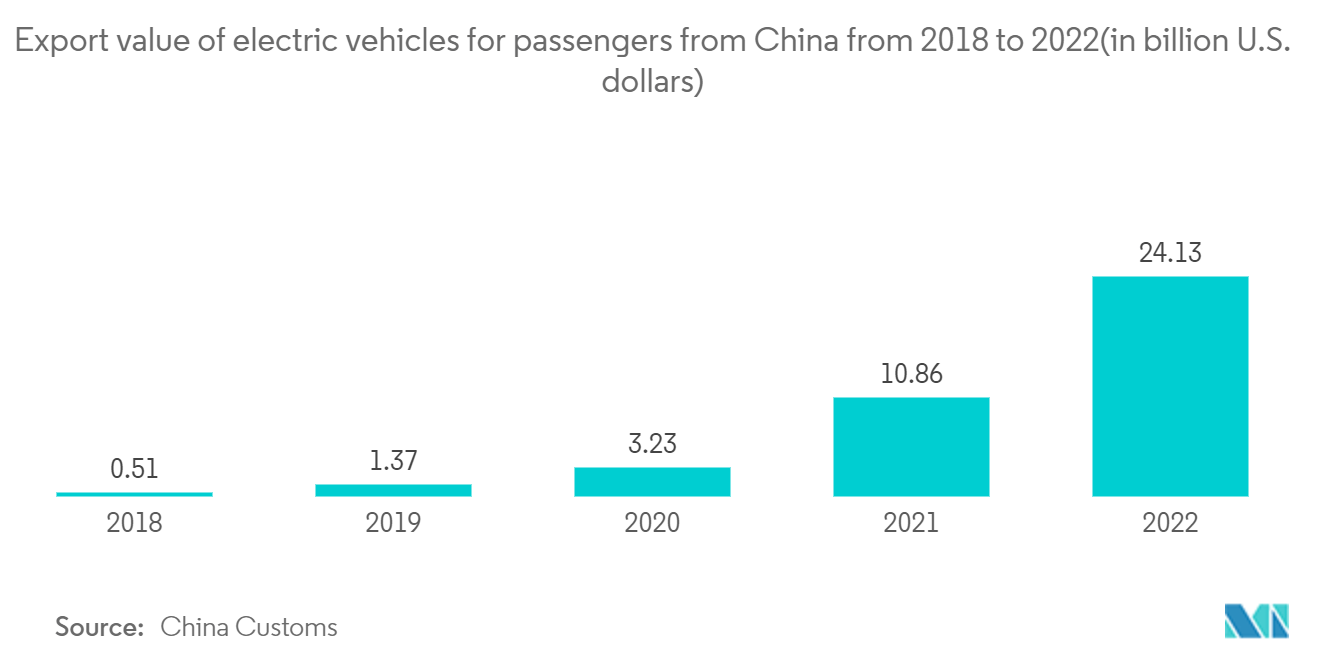Market Trends of China Automotive Parts Aluminum Die Casting Industry
Body Parts Segment is Expected to Register High Growth Rate Over the Forecast Period
Automotive body parts are becoming advanced and innovative with the evolution of new technologies. Among them, the use of lightweight materials for the manufacturing of body components is gaining attention globally. One of the important factors for this trend is the enhanced fuel economy of automobiles through the adoption of lightweight automotive materials in manufacturing crucial parts. Additionally, lightweight vehicles must be manufactured without compromising on safety while also ensuring quality and performance.
In the present scenario, nearly 30-35% of the auto components in a vehicle are made of aluminum alloys, which are mostly developed using the die-casting process due to their higher output volumes and immense flexibility in component design. Electric vehicles (EVs) are expected to use 25% to 27% more aluminum by weight than combustion engine cars during the forecast period. Currently, at an average of 250 kg of aluminum per unit, electric vehicles have already created a demand for around 250,000 million metric tons of aluminum, which is expected to soar to 10 million tons by 2030.
Furthermore, aluminum is a lightweight material with a density of about one-third that of steel material. Using high-pressure die casting for automotive body components allows manufacturers to create lightweight yet strong parts. This weight reduction contributes to overall vehicle weight reduction, enhancing fuel efficiency, range, and handling. Thus, due to the chemical properties of the material, the application and demand for aluminum parts are predicted to increase in the Chinese automotive industry. This, in turn, would expand the market for aluminum die casting in the Chinese automotive industry.

Pressure Die Casting Segment Holds a Significant Market Share -
Aluminum is the most preferred material for pressure die casting within automotive applications, and hybrid and electric vehicle technologies are on the rise. Pressure die casting is expected to be a key contributor in areas of transmission, power train components, and battery compartment housings. For instance, electric vehicles (EVs) are expected to use 25% to 27% more aluminum by weight than combustion engine cars over the coming years.
In China, More than 6 million electric vehicles were sold in 2022, which is an increase of 82.33% over 2021. This massive increase in electric vehicle sales can be attributed to the government incentives provided for the purchase of electric vehicles both at the central and provincial levels, rising vehicular pollution, growing levels of environmental consciousness, and the announcements to ban sales of new ICE vehicles from 2040. Such instances are expected to drive the demand for high-pressure die-casting components owing to their advantages. In addition, the companies manufacturing EVs are also actively procuring these pressure die-casting machines and are adopting this technology to prepare themselves to cater to the growing consumer demand.
The major players across the country are focusing on upgrading their portfolios and focusing the expansion of their manufacturing plants, collaborations, etc., on pitching themselves as top players in the market. For instance,
In April 2022, Nantong Jiangzhong Photoelectricity Co. Ltd ordered two new die-casting machines from Italpressegaus. The two TF 2800 High-Pressure Die Casting (HPDC) machines will be installed at Jiangzhong's facility in Jiangsu Province later this year. They will help Nantong Jiangzhong focus on toggle-free two-platen technology as the future of modern die casting.
Based on the factors above automotive aluminum parts die-casting market is anticipated to grow at a healthy growth rate over the forecast period.


